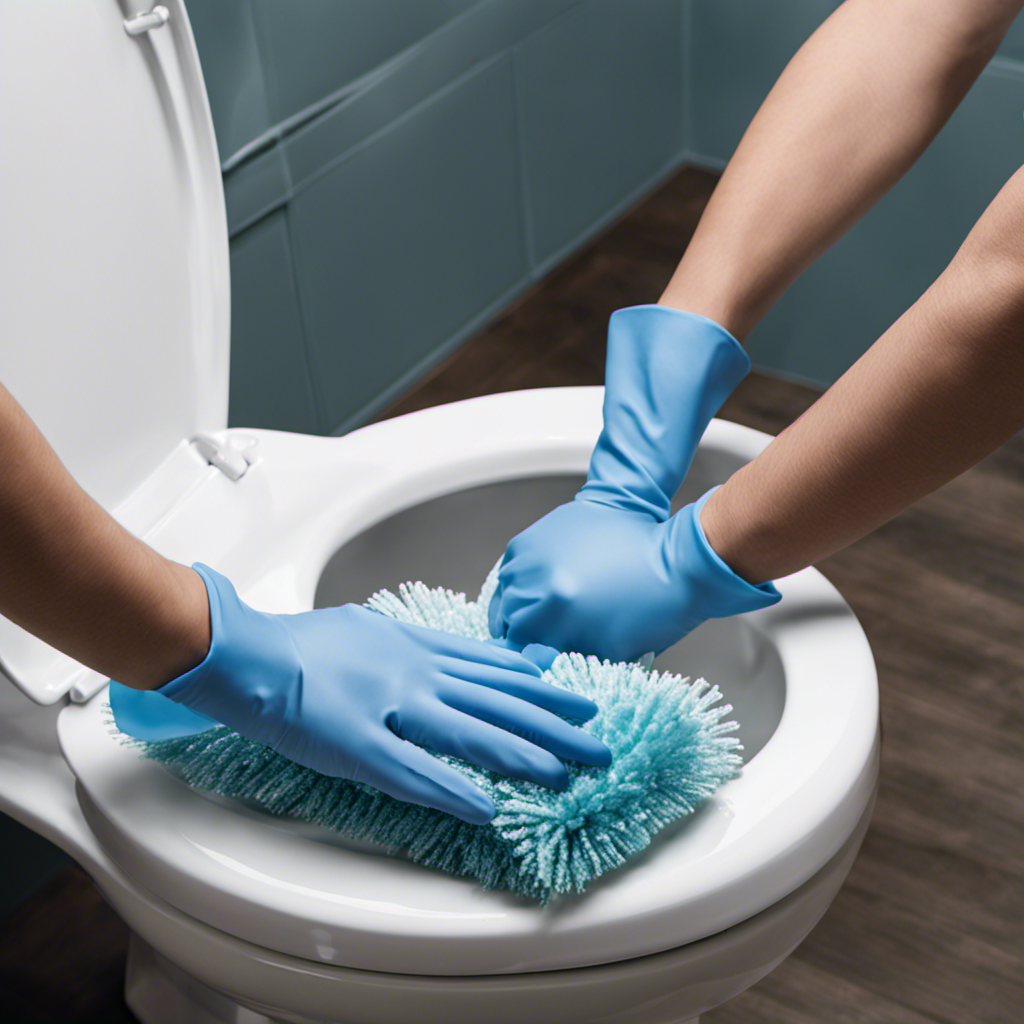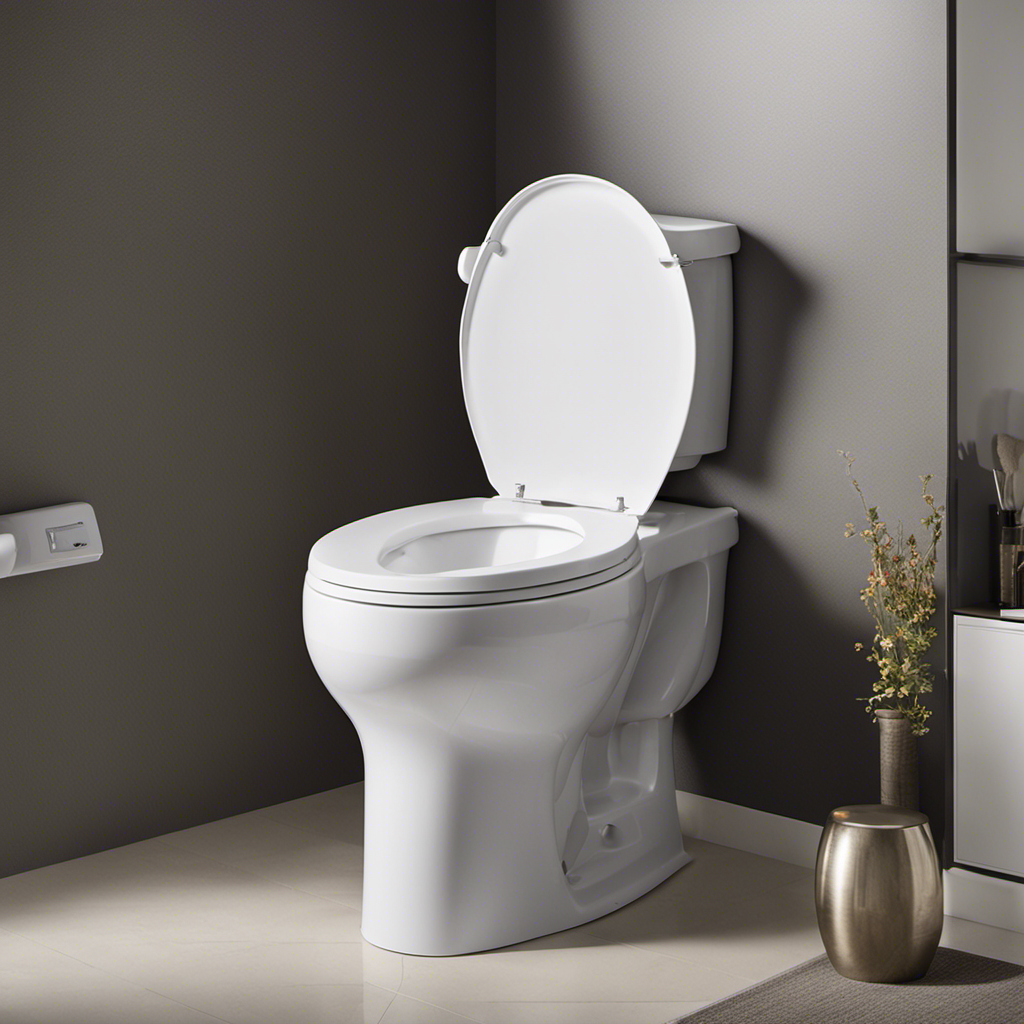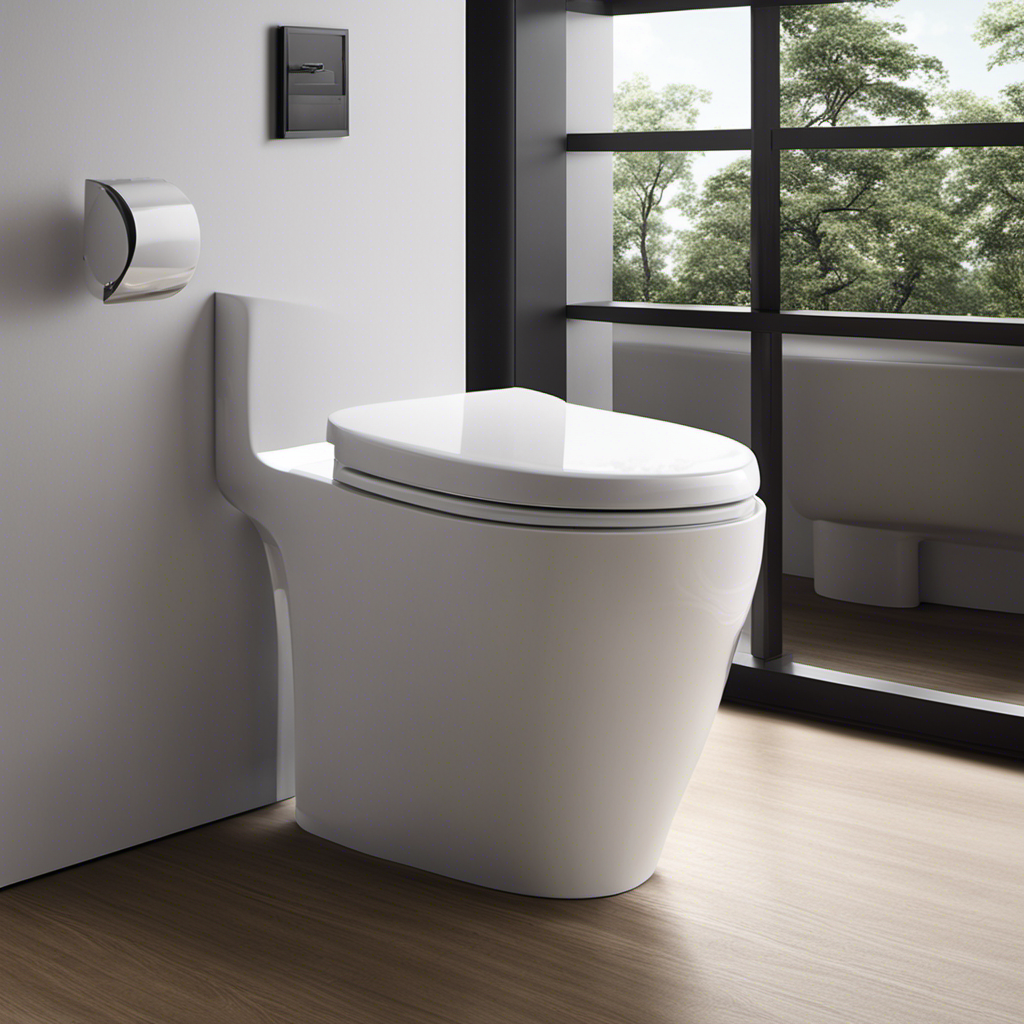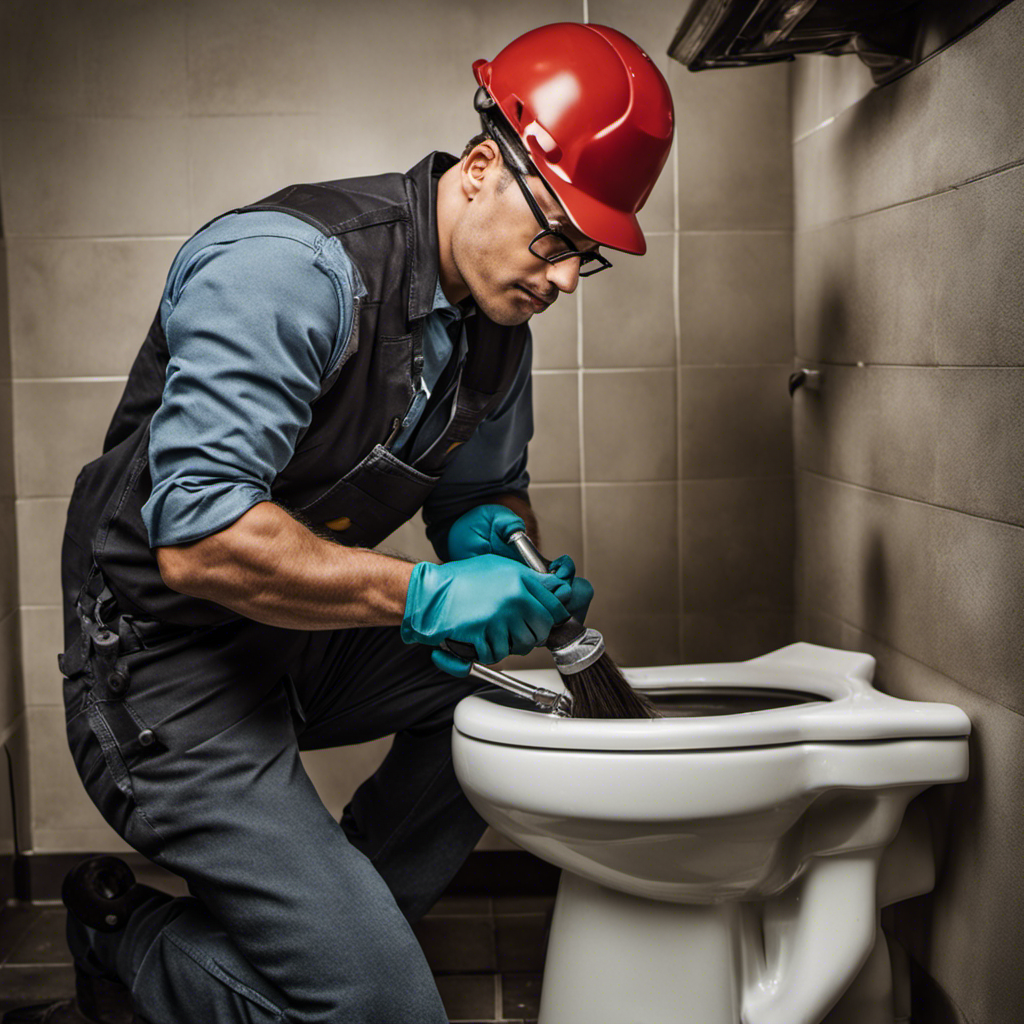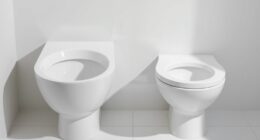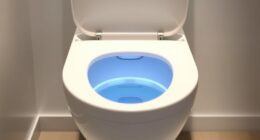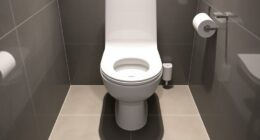Hey there! Ever wondered how to get rid of those pesky toilet seat stains? Well, look no further because I’ve got you covered.
In this article, I’ll walk you through the step-by-step process of removing those stubborn stains and keeping your toilet seat spotless. We’ll discuss the causes of these stains, the right cleaning products to use, and even some tips and tricks for preventing future stains.
So, let’s dive in and say goodbye to toilet seat stains once and for all!
Key Takeaways
- Poor cleaning habits and hard water can lead to toilet seat stains over time.
- Harsh cleaning products and vigorous scrubbing can cause stains, so it’s best to use gentle cleaning methods.
- Different types of toilet seats require different cleaning products, so choose the right ones for plastic, wood, or ceramic seats.
- Regular cleaning and maintenance, including wiping down the seat regularly and using toilet cleaner, can prevent future stains and maintain hygiene.
Understanding the Causes of Toilet Seat Stains
To understand why you have toilet seat stains, you need to consider a few common causes.
There are several factors that can contribute to the discoloration of your toilet seat. One of the main causes is poor cleaning habits. If you don’t clean your toilet seat regularly or thoroughly, stains can accumulate over time.
Another common cause is hard water. High mineral content in the water can leave behind deposits that can discolor the seat.
Additionally, using harsh cleaning products or scrubbing too vigorously can also cause stains.
To effectively remove these stains, it is important to use the right cleaning techniques. Gentle scrubbing with a mild cleaner or a mixture of baking soda and vinegar can be effective in removing toilet seat stains.
Choosing the Right Cleaning Products for the Job
When it comes to selecting the proper cleaning products, it’s important to consider the type of material your toilet seat is made of. Different materials require different cleaning techniques and products to effectively remove stubborn stains. Here is a helpful guide to choosing the right cleaning products for your toilet seat:
| Material | Recommended Cleaning Products |
|---|---|
| Plastic | Mild detergent or vinegar solution |
| Wood | Mild soap and water or wood cleaner |
| Ceramic | All-purpose cleaner or bleach solution |
For effective techniques in removing stubborn stains, consider the following:
-
For plastic seats, scrubbing with a mild detergent or vinegar solution can help break down and remove tough stains.
-
Wood seats should be cleaned gently with a mild soap and water solution or a wood cleaner to avoid damaging the material.
-
Ceramic seats can be cleaned with an all-purpose cleaner or a bleach solution to effectively remove stains and disinfect.
When it comes to eco-friendly alternatives, consider using natural cleaning agents like vinegar, baking soda, or lemon juice. These ingredients are effective at removing stains without the use of harsh chemicals. Remember to always follow the manufacturer’s instructions and test any new cleaning products on a small, inconspicuous area before applying them to the entire seat.
Step-by-Step Guide to Removing Toilet Seat Stains
Here’s a step-by-step guide for getting rid of those pesky marks on your toilet seat. Toilet seat discoloration can be unsightly and difficult to remove, but with these effective stain removal techniques, you’ll have a clean seat in no time.
-
Start by mixing a solution of equal parts baking soda and vinegar. This powerful combination will help break down the stains and eliminate odors.
-
Apply the mixture to the stained areas of the toilet seat, making sure to cover them completely. Let it sit for about 10 minutes to allow the solution to work its magic.
-
Scrub the stains gently with a soft-bristled brush or sponge, using circular motions. Rinse the seat thoroughly with water to remove any residue.
Preventing Future Stains With Proper Maintenance
Regularly maintaining your toilet seat can help prevent future discoloration and keep it looking fresh and clean. By incorporating regular cleaning routines and using toilet seat covers, you can ensure that your toilet seat remains in optimal condition. Cleaning your toilet seat on a regular basis not only removes visible stains but also prevents the buildup of bacteria and germs. Additionally, using toilet seat covers provides an extra layer of protection, preventing direct contact with the seat surface and reducing the risk of stains and discoloration.
To emphasize the importance of regular cleaning routines and using toilet seat covers, here is a simple table:
| Regular Cleaning Routines | Importance of Using Toilet Seat Covers |
|---|---|
| Wipe down with disinfectant regularly | Protects against germs and bacteria |
| Scrub with a toilet cleaner at least once a week | Prevents stains and discoloration |
| Replace toilet seat covers regularly | Ensures cleanliness and hygiene |
Tips and Tricks for a Spotless Toilet Seat
To keep your toilet seat looking pristine, try incorporating these simple tricks into your cleaning routine. Here are three easy ways to maintain toilet seat hygiene and tackle DIY stain removal:
-
Vinegar and Baking Soda Solution: Mix equal parts vinegar and baking soda to create a powerful cleaning agent. Apply the solution to the stained areas on your toilet seat and let it sit for a few minutes. Scrub gently with a brush and rinse thoroughly.
-
Lemon Juice: Cut a lemon in half and rub it directly on the stains. The acidity of the lemon juice helps break down the grime and leaves your toilet seat smelling fresh. Rinse with water afterwards.
-
Hydrogen Peroxide: Dilute hydrogen peroxide with water and apply it to the stains. Let it sit for a few minutes before scrubbing with a brush. Rinse thoroughly.
Conclusion
In conclusion, keeping our toilet seats clean is essential for maintaining a hygienic bathroom environment. By understanding the causes of stains and choosing the right cleaning products, we can easily remove those stubborn marks. Remember, proper maintenance and regular cleaning can prevent future stains from appearing.
Here’s an interesting statistic: Did you know that a study found that the average toilet seat contains around 3,200 bacteria per square inch? This shocking number should motivate us to prioritize cleanliness and regularly clean our toilet seats for a spotless and germ-free bathroom.

